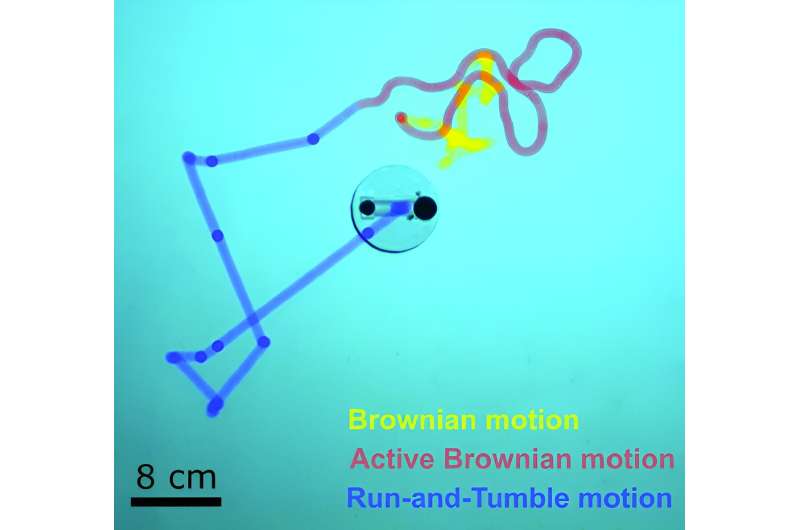This article has been reviewed according to Science X's editorial process and policies. Editors have highlighted the following attributes while ensuring the content's credibility:
fact-checked
peer-reviewed publication
trusted source
proofread
Tuning the movement of a self-propelled robot to the physics of living matter

Robots are becoming an increasingly important part of our lives, performing jobs that are too dangerous for humans. This can often involve navigating complex environments, something rigid-bodied autonomous robots find difficult. Such robots faced similar challenges when miniaturized and used to model physics of living matter.
These challenges could be countered by a robot that can move with the mobility of living things and can respond to environmental signals just like a cellular organism. To model such systems experimentally, it is necessary to develop a tunable system that can replicate life-like dynamics.
In a new paper in The European Physical Journal E, the authors, including Nitin Kumar from the Indian Institute of Technology Bombay and his co-authors, describe the development of a scheme for generating tunable active dynamics in a self-propelled robotic device. The result is a two-wheeled robot that utilizes a simple differential-drive mechanism, enabling a range of complex active dynamics to be implemented with precise control.
"In our research, we developed a centimeters-sized robot capable of mimicking the complex characteristics of a typical living particle. This robot exhibits non-equilibrium dynamics in excellent agreement with established theoretical models," Kumar said. "It can also adapt to environmental cues using onboard infrared (IR) and light intensity sensors, thus making them an ideal system to elucidate physical laws governing living-active systems. To the best of our knowledge, this level of explicit demonstration has not been shown in this class of robotic devices."
The researcher explains that until now, to address challenges in the physics of active and living matter with robots, researchers have mainly used hexbugs, centimeter-long, bug-shaped vibrating particles, but these systems have significant drawbacks.
"Hexbugs lack programmability, speed control, and the ability to modify their motion in response to physical obstacles or light intensities," Kumar added. "We believe our robots, with their advanced capabilities, can explore much more complex problems in active and living matter."
The team is currently employing them in a range of scientific experiments on active and living matter.
"Furthermore, they can be easily modified and programmed to perform semi-autonomous dynamics, enabling them to navigate complex landscapes filled with physical obstacles efficiently," Kumar concluded. "We believe such robotic devices will play an important role in improving our understanding of living and active systems."
More information: Somnath Paramanick et al, Programming tunable active dynamics in a self-propelled robot, The European Physical Journal E (2024). DOI: 10.1140/epje/s10189-024-00430-x


















